Impacts of exposure to a seismic source survey on silverlip pearl oysters (Pinctada maxima)
Miles J. G. Parsons A B , Conrad W. Speed A , Robert D. McCauley B , Rebbeca Fisher A , Cecile Dang C , Diego R. Barneche A , Jayson Semmens D , Stephen Newman E , Ryan Day D , Hosna Gholipourkanani C and Mark G. Meekan A *A Australian Institute of Marine Science, Indian Ocean Marine Research Centre, Level 3, The University of Western Australia, Fairway, Crawley, WA 6009, Australia.
B Centre for Marine Science and Technology, Curtin University, Bentley, WA 6104, Australia.
C Aquatic Animal Health Research Laboratory, Department of Primary Industries and Regional Development, South Perth, WA, 6151, Australia.
D Institute of Marine and Antarctic Studies, University of Tasmania, Hobart, Tas. 7001, Australia.
E Western Australian Fisheries and Marine Research Laboratories, Department of Primary Industries and Regional Development, Hillarys, WA 6025, Australia.
The APPEA Journal 62 S337-S342 https://doi.org/10.1071/AJ21093
Accepted: 15 March 2022 Published: 13 May 2022
© 2022 The Author(s) (or their employer(s)). Published by CSIRO Publishing on behalf of APPEA.
Abstract
Between 2018 and 2021, AIMS and its partners conducted a large-scale experiment to investigate the effect of exposure to a 3D seismic survey on pearl oysters. In August 2018, ≈11 000 adult wild silverlip pearl oysters (Pinctada maxima) were collected and attached to bottom culture lines to acclimatise for 1 month at a holding lease site, 40 km off Broome, WA. These oysters were split across rows configured parallel to each other at seven horizontal distances up to 6000 m from a ‘zero line’. In September 2018, we sailed a commercial seismic vessel along one 20 km-long inactive (vessel control) sail line along the zero line, followed by six operational (exposure) sail lines, at increasing distances from the zero line, with each line separated in time by either 12 or 24 h. This design resulted in groups of pearl oysters with 35 different exposure histories (seven distances, five exposure distances) that were then transferred to undergo either lethal biophysical sampling or pearl seeding for a ‘grow-out’ study of pearl production. Biophysical sampling included immunology tests, primarily using flow cytometry and gene expression changes in nacre- and stress-associated genes. Audits of oyster growth and condition were conducted at various time points between the exposure period and harvesting of the seeded oysters. The number and quality of pearls produced by each exposure group was assessed 2 years after exposure (December 2020). The results of these analyses are being finalised for presentation.
Keywords: anthropogenic impacts, impulsive, invertebrates, marine noise, mortality, pearl oysters, pearl production, seismic source exposure.

Dr Miles Parsons attained his PhD at the Centre for Marine Science and Technology, Curtin University, in 2010, where he remained as a Research Fellow until December, 2017. He then joined the Australian Institute for Marine Science as a Research Scientist, focusing on underwater acoustics and, in particular, the NWSS research program. |

Dr Conrad Speed is a Research Scientist at the Australian Institute of Marine Science and has been working as a tropical reef ecologist, specialising in the movement and behaviour of sharks and predatory fish for the past decade. Conrad has authored numerous papers in international scientific journals, focusing on predatory fish communities and the drivers of their movement. |
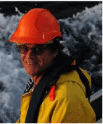
Associate Professor Robert McCauley began his science career in 1987 working in the area of underwater acoustics, receiving his PhD in 2001 from James Cook University. Rob has been working at Curtin University since 1996 developing hardware, techniques and analytical approaches for passive acoustic monitoring and understanding impacts of man-made sound on marine fauna. He has researched impacts of seismic survey air gun sources on animals from plankton to whales. |

Dr Rebecca Fisher is a Quantitative Ecologist with over 15 years of experience in marine ecology and highly developed skills in statistical modelling. Her ecological research focuses on tropical marine ecosystems, where she has contributed to a broad range of topics, including larval performance, survival, growth and dispersal; patterns and drivers in biodiversity; and anthropogenic impacts. Her interests lie in applying quantitative methods to problems in marine ecological research. |

Cecile Dang is a Principal Research Scientist within the aquaculture R&D group at the Department of Primary Industries and Regional Development in Western Australia. She currently leads the Aquatic Animal Health Research Laboratory where she investigates health and productivity issues in farmed invertebrates. Her research has specialised in investigating any aspect of diseases in aquatic animals including the interactions between hosts, pathogens and their environment in molluscs. She studied commercially important diseases in rock oysters, pearl oysters, abalone and other mollusc species. |
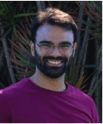
Dr Diego R. Barneche is an Ecological Statistician with AIMS who is passionate about integrating statistical, mathematical, experimental and computational approaches to unify evolutionary ecology across scales. His overarching research goal entails the use of theory-driven, fundamental science to better inform decision-making processes and ecosystem management in an everchanging world. |
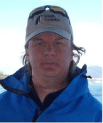
Professor Jayson Semmens is an Ecologist/Eco-physiologist at the Institute of Marine and Antarctic Studies, University of Tasmania. He specialises in examining the movement, behaviour and physiology of marine invertebrates and fishes using bio-telemetry and biologging approaches. He also developed a physiological approach to examine the potential impact of anthropogenic noise on marine invertebrates. |

Dr Stephen Newman is a Principal Research Scientist at the Department of Primary Industries and Regional Development based in Perth, Western Australia. He currently leads the demersal fish research group within the Aquatic Science and Resource Assessment Branch. His research has primarily involved investigating the status and assessment of the fish resources of Western Australia. |
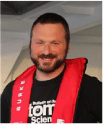
Dr Ryan Day is a Research Fellow at the Institute of Marine and Antarctic Studies, University of Tasmania. He specialises in biochemical and physiological assessments of health and stress in a range of marine invertebrates, including scallops, rock lobster, octopus and pearl oyster. His research has a particular focus on the impacts of seismic surveys and aquatic noise. |
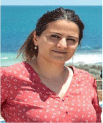
Dr Hosna Gholipourkanani is Technical Officer within the aquaculture R&D group at the Department of Primary Industries and Regional Development in Western Australia. She has 15 years’ experience working on health issues of teleost fish and shellfish affected by pathogen, nutritional and environmental challenges. |
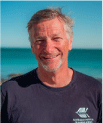
Dr Mark Meekan is a Senior Principal Research Scientist at the Australian Institute of Marine Science based in Perth, Western Australia. He is a fish ecologist with interests ranging from the early life history of reef fishes to the ecosystem role and function of elasmobranchs. Mark has published over 200 papers in international journals and he currently supervises post-doctoral fellows and PhD students on working shark and reef fish projects throughout the Indian and Pacific oceans. |
References
Chion C, Lagrois D, Dupras J (2019) A meta-analysis to understand the variability in reported source levels of noise radiated by ships from opportunistic studies. Frontiers in Marine Science 6, 714| A meta-analysis to understand the variability in reported source levels of noise radiated by ships from opportunistic studies.Crossref | GoogleScholarGoogle Scholar |
Day RD, McCauley RD, Fitzgibbon QP, Hartmann K, Semmens JM (2017) Exposure to seismic air gun signals causes physiological harm and alters behavior in the scallop Pecten fumatus. Proceedings of the National Academy of Sciences 114, E8537–E8546.
| Exposure to seismic air gun signals causes physiological harm and alters behavior in the scallop Pecten fumatus.Crossref | GoogleScholarGoogle Scholar |
Duarte CM, Chapuis L, Collin SP, et al. (2021) The soundscape of the Anthropocene ocean. Science 371, eaba4658
| The soundscape of the Anthropocene ocean.Crossref | GoogleScholarGoogle Scholar |
Hildebrand JA (2009) Anthropogenic and natural sources of ambient noise in the ocean. Marine Ecology Progress Series 395, 5–20.
| Anthropogenic and natural sources of ambient noise in the ocean.Crossref | GoogleScholarGoogle Scholar |
McCauley RD, Meekan MG, Parsons MJG (2021) Acoustic pressure, particle motion, and induced ground motion signals from a commercial seismic survey array and potential implications for environmental monitoring. Journal of Marine Science and Engineering 9, 571
| Acoustic pressure, particle motion, and induced ground motion signals from a commercial seismic survey array and potential implications for environmental monitoring.Crossref | GoogleScholarGoogle Scholar |
Meekan MG, Speed CW, McCauley RD, et al. (2021) A large-scale experiment finds no evidence that a seismic survey impacts a demersal fish fauna. Proceedings of the National Academy of Sciences 118, e2100869118
| A large-scale experiment finds no evidence that a seismic survey impacts a demersal fish fauna.Crossref | GoogleScholarGoogle Scholar |
Newhall AE, Lin YT, Miller JF, Potty GR, Vigness-Raposa K, Frankel A, Giard J, Gallien DR, Elliot J, Mason T (2016) Monitoring the acoustic effects of pile driving for the first offshore wind farm in the United States. The Journal of the Acoustical Society of America 139, 2181
| Monitoring the acoustic effects of pile driving for the first offshore wind farm in the United States.Crossref | GoogleScholarGoogle Scholar |
Pangerc T, Theobald PD, Wang LS, Robinson SP, Lepper PA (2016) Measurement and characterisation of radiated underwater sound from a 3.6 MW monopile wind turbine. The Journal of the Acoustical Society of America 140, 2913–2922.
| Measurement and characterisation of radiated underwater sound from a 3.6 MW monopile wind turbine.Crossref | GoogleScholarGoogle Scholar |
Parsons MJ, Erbe C, Meekan MG, Parsons SK (2021) A review and meta-analysis of underwater noise radiated by small (<25 m length) vessels. Journal of Marine Science and Engineering 9, 827
| A review and meta-analysis of underwater noise radiated by small (<25 m length) vessels.Crossref | GoogleScholarGoogle Scholar |
Reine KJ, Clarke D, Dickerson C (2014) Characterization of underwater sounds produced by hydraulic and mechanical dredging operations. The Journal of the Acoustical Society of America 135, 3280–3294.
| Characterization of underwater sounds produced by hydraulic and mechanical dredging operations.Crossref | GoogleScholarGoogle Scholar |


